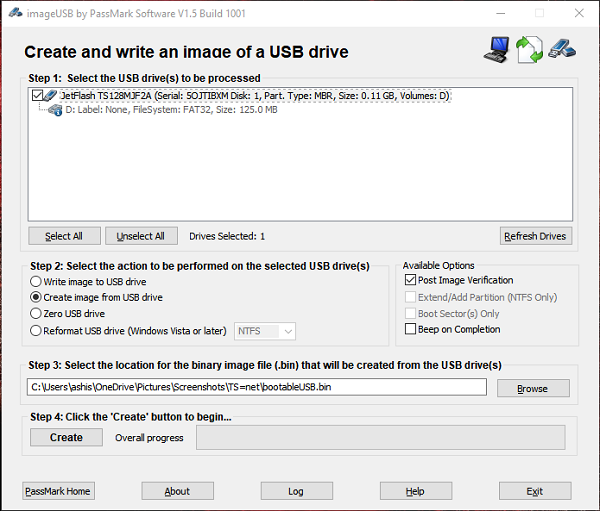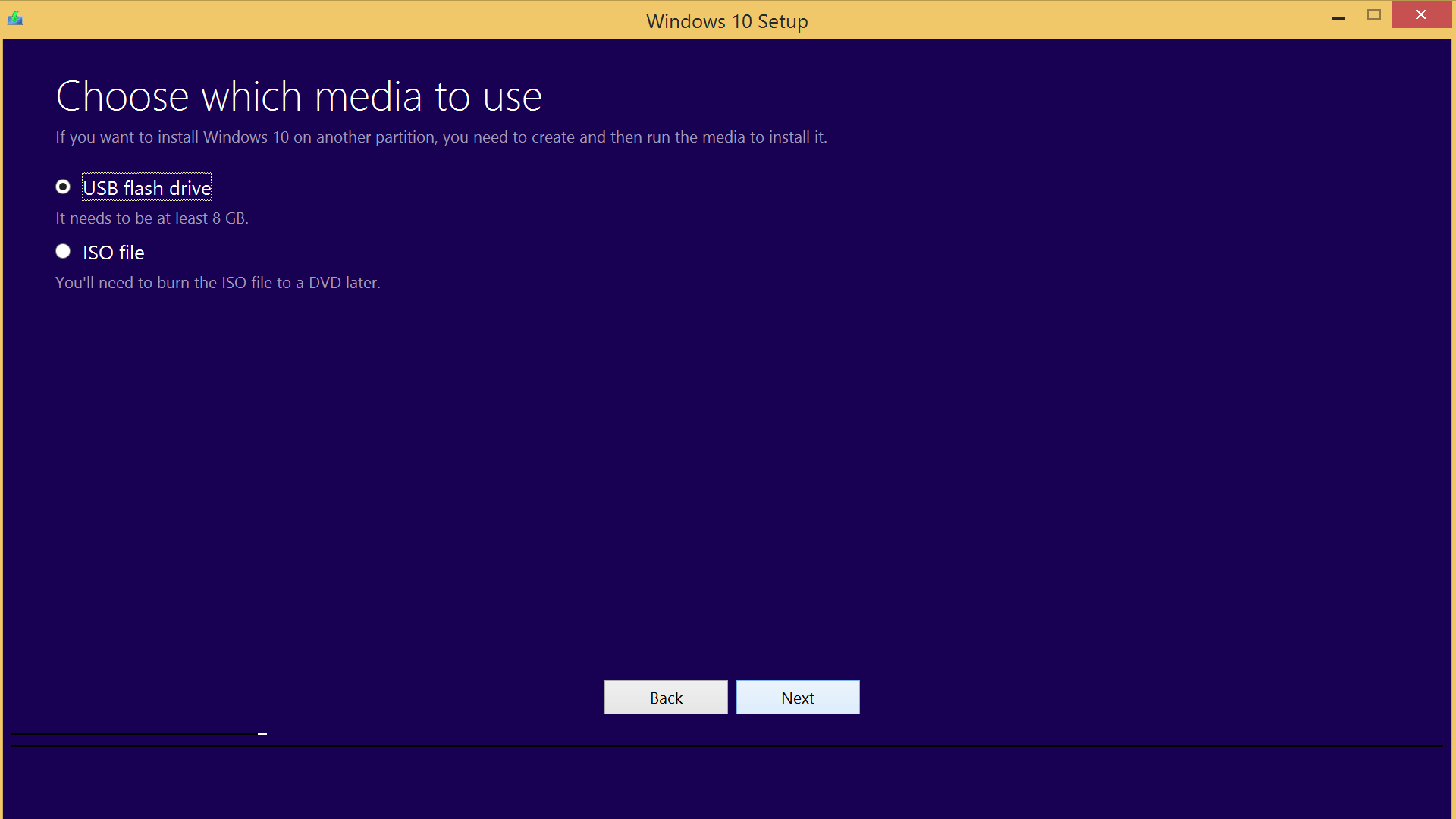Bootable USB is a media that contains everything required to boot Windows. And it's always used when your computer get in trouble, or you want to clean install a fresh copy of Windows and perform in-place upgrade to Windows 10 from previous veriosn. But sometimes you will find Windows 10 won't boot from USB drive, just like the following case.
'I'm having problem with my Toshiba L875-S7308 where I cannot boot my USB while in UEFI mode.
I've formatted the USB (tried MBR and GPT - same result), and restored the ISO using Windows 7 USB/DVD Download Tool. When I try booting from USB, the laptop simply ignores it and continues booting Windows.
I'v tried changing boot order, or manually selecting USB with no positive result. It seems like it's not even recognizing it (it's not showing the USB's name in the boot menu).'
Create a WinPE bootable disk. Download and launch EaseUS Partition Master on a new PC which runs the same system as yours. Click 'WinPE Creator' on the toolbar. And select to create the bootable disk on a USB drive. If your computer has a CD/DVD drive, you can also create the bootable disk to CD/DVD. Click 'Proceed' to finish the process.
Now, let's have a glance about this article.
No boot sector on usb device. J'ai une vielle DELL latitude D610 avec un ubuntu 9.04. Voici les commandes que j'ai tapees: fdisk -l Disk /dev/sda: 60.0 GB, 0 bytes 255 heads, 63 sectors/track, 7296 cylinders Units = cylinders of 16065. 512 = 8225280 bytes Disk identifier: 0xf561f561 Device Boot Start End Blocks Id System. In contrast to the volume mode, the device mode copies the whole USB device, including boot sector. So if you want to make a backup of a bootable USB device, or you have created a flash drive with more than one partition, you should use the device mode. The volume mode processes the first volume on an USB flash drive.
About Windows 10 bootable USB not working
To be honest, many of users like you encounter similar issues above, the computer directly boot from the current Windows without displaying any error message. It may be caused by wrong boot mode, just change it to right one. Most of the old computer models supports Legacy BIOS while the modern computer like Windows 8/10 uses UEFI boot mode. Also, it's probably a problem of file system issue. Usually, BIOS requires the USB stick to be NTFS and UEFI to be FAT32.
Besides, you may encounter other situations. Here, I'll list them and related cause.
Bootable USB is not detected as a boot device. This means your USB stick is either corrupted or unbootable itself, or USB boot is not supported on the computer.
Bootable USB not showing up in BIOS. This may happen because of incrrect boot order. By default, your computer only boot from the first boot option.
Bootable USB not showing up in boot menu. This is because your USB drive is old USB 1.0 or 2.0, which is not supported by Windows 10.
You can't boot from USB, even select the right boot option. In this case, the USB drive is likely to be damaged or corrupted. You may receive error message like 'no bootable devices found'.
And then, see below and follow the suggestions to fix Windows 10 boot from USB not working issue.
Windows 10 not booting from USB - how to fix?

Solution 1. Try USB drive on different computers.
Just take your USB hard drive and use it on another computer, see if it’s bootable. This is the simplest way.
Solution 2. Change the file system of USB drive.
Format the drive with NTFS file system if the computer is Legacy BIOS mode. Meanwhile, format your USB with FAT32 if your computer boot mode is UEFI.
Solution 3. Set USB as the first boot option.
You can restart your computer, press the key (eg: F2, ESC) on the first screen to enter BIOS, find out Boot Options or something like that and set boot priority to USB drive. If not, your computer does not support this option.
Solution 4. Sure cuts alot version 2 download for cricut. Enable CSM or Legacy boot mode, and disable Secure Boot Control.
You can enter the BIOS screen and click Boot > Launch CSM and enable it. Next, click Security > Secure Boot Control and disable it.
Solution 5. Change boot mode in BIOS.
No Usb Boot Option
You can enter BISO and click UEFI/BIOS Boot Mode or Launch Storage OpROM Policy, then select the right mode.
Check if you can boot from USB in Windows 10

This is the last things for Windows 10 recovery usb not working, boot from this drive and check if it's bootable. To do this, you can use Windows 10 quick boot menu 'Use a device' without changing the startup sequence in the BIOS. Also, if you cannot see this option, you need to manually change boot order and boot from the bootable USB.
To boot Windows 10 from quick boot menu, use the following steps.
Step 1. Press and hold the 'Shift' key while clicking 'Restart' button. Then, your computer will reboot to the Advanced Startup Options screen, click 'Use a device'.
Step 2. Select the boot USB drive, wait and see if your computer boot from this drive.
To change boot order manually and boot from USB, see steps below.
Step 1. Shutdown your computer and then start it.
No Boot Sector On Usb Device Windows 10
Step 2. Press a specific key when you see a prompt at the first boot screen, like this, 'Press ESC to enter BIOS'. Also, if your computer is fast boot mode, you don't need to press any key.
Step 3. Go to the 'Boot' tab and use the up arrow to move the USB drive to the top.
Step 4. Press 'F10' to save changes and restart your computer with USB dive.
Can't boot from USB - create a bootable USB from scratch
Up still now, if you don't fix Windows 10 bootable USB not detected or showing up via the given solutions, you can choose to create an installation disc with Windows 10 media creation tool provided by Microsoft's official website, or create a bootable USB drive with built-in recovery drive (for detailed steps, see Windows 10 recovery disk).
Also, you could try third-party Windows 10 bootable USB tool like AOMEI Backupper Standard for replacement. It is simple, easy, and more flexibly. But what suprises me is its strong compatibility among Windows system, including Windows 10/8/7/XP/Vista.
It allows you to create a bootable media on any Windows computer and use it on all of Windows computers without boot issue. And you don't need to create a repair boot drive for every computer, which may be confused for a long time use.
Well then, let's get started to create a bootable USB for all of your computer, so you can restore your computer to a good state in the event of a disaster. Please create a system backup, disk backup, partition backup or file backup per your needs in advance and it's the prmise to get your data and system back.
Step 1. Download AOMEI Backupper Standard, install and launch it. And then, click Create Bootable Media under the Tools tab.
Download Freeware
Win 10/8.1/8/7/XP
Secure Download
Except for bootable media creation, there is similar feature but it is more powerful, it's 'PXE boot tool(supported by AOMEI Backupper Workstation)'. It allows you to start multiple computers over network simultanously and then perform batch operations including backup, restore and maintainance, thereby saving a lot of time and effort for users with a large number of computers or small and medium-sized companies.

Step 2. Select Bootable Disc Type. It’s recommended to select Windows PE. This option is suitable for everyone and offers you more operations than Linux.
Step 3. Select the boot mode for your disc and then click Next. If your computer is Legacy BIOS mode (system disk is of MBR partition style), you can tick Create legacy bootable disc. If not, you should tick Create UEFI bootable disc.
Step 4. Tick USB Boot Device and then click Next to move on.
Step 5. Wait for the process and click Finish when it reaches to 100%.
No Boot Sector On Usb Device Recognized
Now, computer won't boot from USB is not a problem anymore and you already have a new bootable USB. If you use media creation tool or built-in recovery drive, then you can start to install SSD on Windows 10, or repair your computer.
If you use the 3rd party tool, it's suggested to backup system/disk/partition/files per your needs. This tool is based on the backup image created by itself and then you can recover your computer and data on it in a very short time, even disimilar hardware restore.
Conclusion

No Boot Sector On Usb Device Windows Xp
That's all for Windows 10 bootable USB not working, you can choose to fix it with given solutions or create a brand-new bootable USB with the help of Windows 10 media creation tool, built-in recovery drive or third-party bootable USB tool. The previous two options are better choices for you to troubleshoot computer while the later one is to focused on getting your troublesome computer back by restoring backup image created on it.
You can select one of them based on your needs, but honestly, the latter one is easier and safer. Iclone 5 free download full version with crack. Meanwhile, it's till a all-in-one software integrated with backup & restore, file sync, clone feature, which are helpful to ensure data and system, such as, backup system/disk/partition/file, incremental & differential backup, USB plug in, daily/weekly/monthly schedule backup, sync files between computer and flash drive, clone disk to larger disk, migrate operating system to SSD etc.